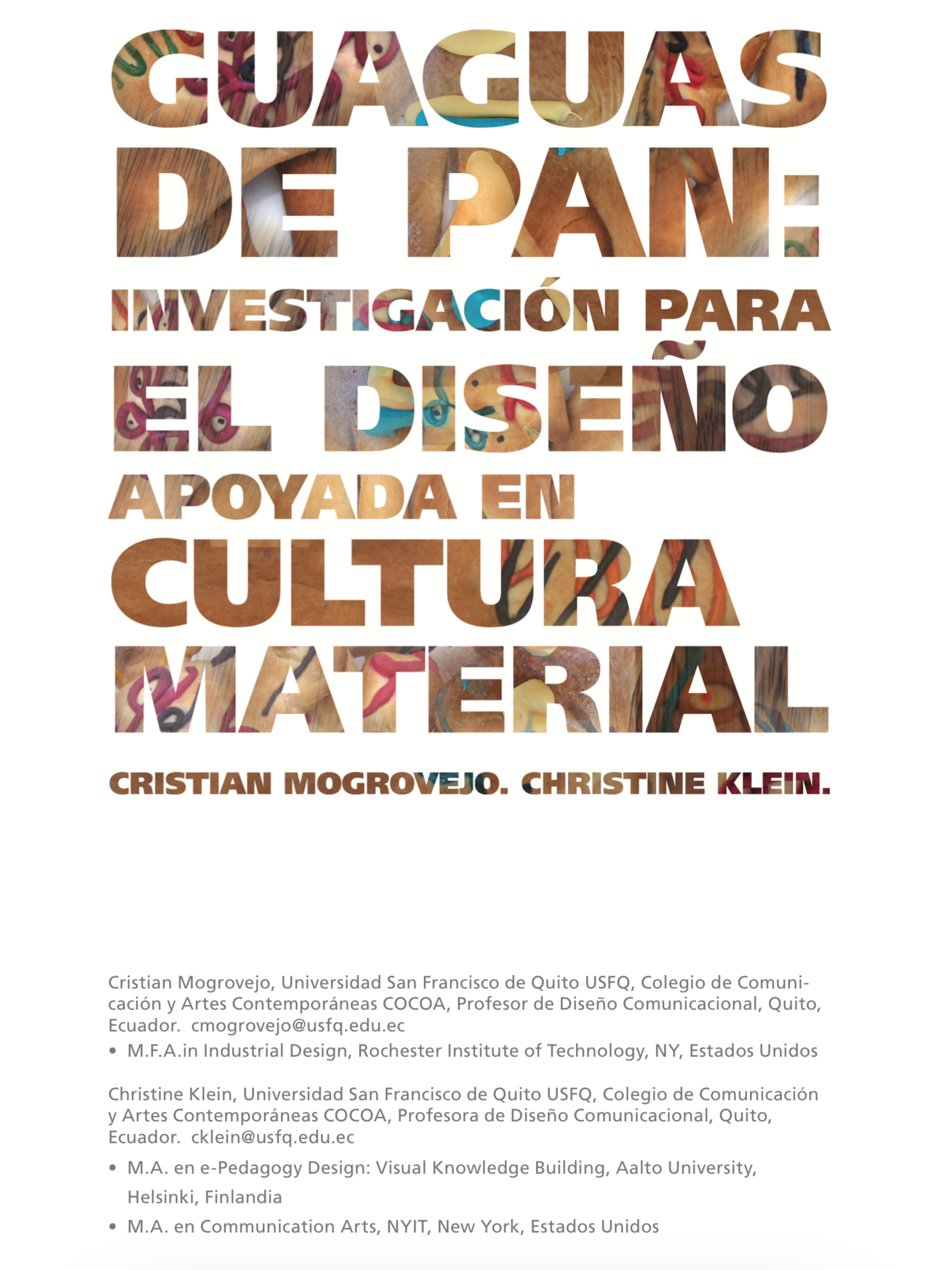
Published 2015-08-01
Keywords
- material culture,
- design,
- guaguas de pan,
- cultural information
How to Cite
Abstract
This paper suggests the use of material culture in design research and as a conceptual tool for understanding how objects are converted into cultural information and acquire meaning within social dynamics. We would like to see design research as a flexible approach that is nourished by different sources, theories, practices and ways of understanding research that do not only come from design theories. We present a case study about the guaguas de pan (bread figures) in Ecuador. We begin with a review of design theories that will be used for a morphological analysis, and then continue with some approaches to material culture. The ultimate goal of this article is to illustrate with a concrete example a research exercise that could be used for designing.
Downloads
References
- Barthes, R. (1971). Elementos de semiología. Madrid, España: Alberto Corazón Editor.
- Carvalho - Neto, P. (1964). Diccionario del Folklore Ecuatoriano: Tratado del Folklore Ecuatoriano I. Quito, Ecuador: Casa de la Cultura Ecuatoriana.
- Cuvi, P. (2002). Ecuador: viva la fiesta. Quito, Ecuador: Dinediciones.
- Encalada, O. (2005). La fiesta popular en Ecuador. Cuenca, Ecuador: Cidap.
- Eco, U. (1981). «The Theory of Signs and the Role of the Reader». En The Bulletin of the Midwest Modern Language Association. No. 14(1): 35-45. Recuperado de Jstor.org.
- Guevara, D. (1960). «Comidas y bebidas ecuatorianas». En Folklore Americano. Año VIIIIX, No. 8-9. Lima.
- Hoskins, J. (2006). Agency, Biography and Objects. Handbook of material culture. Londres, Reino Unido: Sage Publications.
- Krippendorff, K. (1989). «Product Semantics: A Triangulation and Four Design Theories». Product Semantic "™89. Helsinki: Seppo Väkeva. ( 118 ) post(s). Volumen 1. Agosto 2015. AKADEMOS. Cristian Mogrovejo. Christine Klein.
- Layton, R. (2006). Structuralism and Semiotics. Handbook of material culture. Londres, Reino Unido: Sage Publications.
- Moles, A. (1975). Teoría de los objetos. Segunda edición. Barcelona, España: Gustavo Gili.
- Norman, D. (2006). Emotional Design: Why We Love (or Hate) Everyday Things. Nueva York, NY: Basic.
- Ordóñez, E. (2009). «La cocina original o aborigen». Memorias del IV Congreso «La cocina tradicional andina y el calendario ritual». Quito, Ecuador.
- Papanek, V. (1984). Design for the real world: Human ecology and social change. Segunda edición. Londres, Reino Unido: Thames and Hudson.
- Quarante, D. (1992). Diseño Industrial 1: Elementos introductorios. Barcelona, España: Ceac. 1992b Diseño Industrial 2: Elementos introductorios. Barcelona, España: Ceac.
- Richardson, A. (1993). «The death of the designer». En Design Issues. Vol 15, No. 2: 18-27.
- Rubel, W. (2011). Bread: A global history. Chicago, IL: Reaktion Books.
- Tilley, C. (2006). Handbook of Material Culture. Londres, Reino Unido: Sage Publications.
